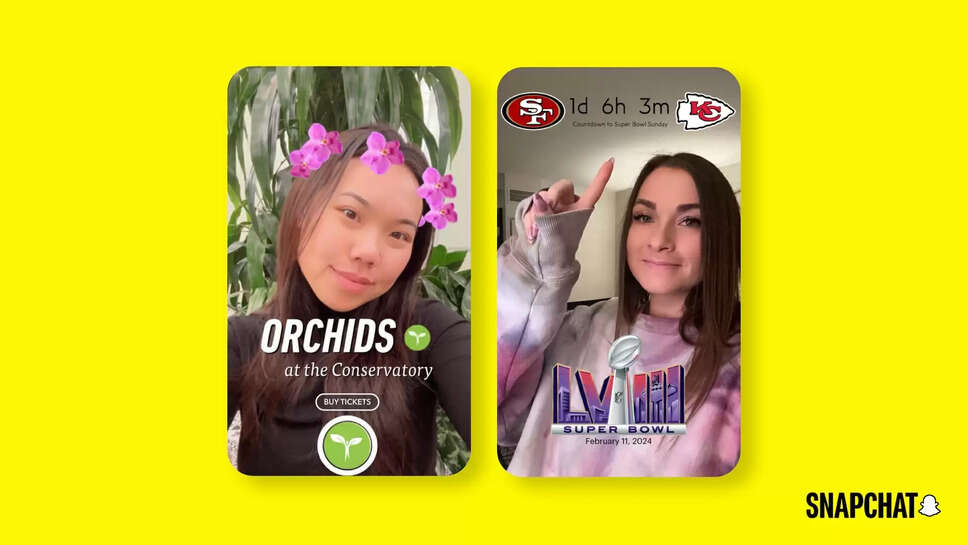Gen Z in India Twice as Engaged with Snapchat AR Ads, Says New Report

In the ever-evolving digital advertising landscape, one platform appears to have cracked the code for Gen Z attention in India — Snapchat. According to a new industry report, Snapchat’s augmented reality (AR) advertising campaigns are capturing twice as much attention from Gen Z users in India compared to traditional digital ads.
This finding underscores the growing influence of immersive and interactive advertising formats, especially among younger audiences who are redefining how brands connect with consumers. The data also reaffirms Snapchat's strategic focus on AR as a core differentiator in the crowded Indian social media ecosystem.
The Gen Z Factor: Redefining Engagement
Gen Z — those born roughly between 1997 and 2012 — are not just tech-savvy; they are tech-native. In India, this cohort represents over 370 million people, making them a crucial target for consumer brands across categories. However, this generation is notoriously difficult to engage using conventional digital advertising methods. They tend to skip, block, or ignore static and passive ads in favor of content that’s immersive, relevant, and creative.
Snapchat, which positions itself as a camera-first platform, has leveraged this behavior with considerable success. The report finds that AR ads on Snapchat generate 2X more visual attention and higher engagement levels among Gen Z users in India compared to non-AR formats.
According to the study, attention spans were significantly longer on AR lenses and filters. Users not only paused longer but also interacted with the content in meaningful ways, such as trying on virtual products, sharing AR selfies, or playing branded mini-games.
What Makes AR Ads So Effective?
Several factors contribute to the effectiveness of Snapchat’s AR-based advertising model:
-
Interactivity: AR experiences invite users to participate, not just observe. Whether it’s trying on sunglasses, changing hair color, or dancing with a virtual character, AR gives users agency.
-
Personalization: Many of the AR ads are customizable and responsive, creating a sense of personal relevance that static ads often lack.
-
Creativity and Playfulness: Snapchat’s platform culture is rooted in creativity and play. Brands that embrace this with quirky or playful AR filters often see better results.
-
Social Sharing: Gen Z users are more likely to share AR-generated content with friends, which helps organically boost ad reach without additional media spending.
The report also notes that AR ads deliver higher brand recall and purchase intent when compared to standard video or banner ads. This is particularly notable in sectors like beauty, fashion, electronics, and QSR (quick service restaurants), where visual experience influences buying decisions.
Snapchat’s Strategic Position in India
While Snapchat is often overshadowed in India’s social media narrative by larger platforms like Instagram, YouTube, and WhatsApp, it has carved out a loyal and active user base among young Indians. The company claims over 200 million monthly active users in India, a significant proportion of which are Gen Z.
The platform’s focus on innovation, especially in AR, is part of a long-term bet that younger generations will prefer experiences over exposure. With its Lens Studio tool, Snapchat allows both global and local brands to create AR experiences that resonate with Indian users — from local festival-themed lenses to Bollywood-style transformations.
Snapchat has also invested in regional language content, creator collaborations, and education around digital literacy — all of which support deeper user trust and engagement.
Case Studies: Brands Winning with Snapchat AR
Several leading brands in India have seen notable success through Snapchat’s AR ad solutions:
-
L'Oréal India ran an AR campaign allowing users to try on shades of lipstick virtually. The campaign saw record-high engagement and led to a measurable uptick in product trials and online sales.
-
Swiggy used interactive lenses during major food festivals and cricket tournaments, integrating gamified elements that boosted both brand visibility and app downloads.
-
Adidas launched a try-before-you-buy sneaker campaign with 3D AR filters, allowing users to see what different shoe models looked like on their feet. This not only drove engagement but helped reduce product returns from online sales.
These examples reflect a broader shift: AR isn’t just a gimmick — it’s becoming a core element of brand storytelling and product marketing.
The Broader Trend: India’s Embrace of AR and Immersive Tech
India’s digital audience is rapidly evolving, and the appetite for immersive experiences is growing. With increased smartphone penetration, cheaper data plans, and improved camera technology, AR content is more accessible than ever before.
The report predicts that AR-based advertising will become mainstream in India within the next two years, especially as brands invest more in 3D content creation and personalized consumer engagement. Snapchat is currently leading the charge, but other platforms like Instagram and YouTube Shorts are not far behind, also testing and rolling out AR features.
Additionally, the integration of AR with e-commerce platforms (such as AR-powered product previews and virtual try-ons) is expected to further bridge the gap between advertising and conversion.
Challenges Ahead
Despite its success, Snapchat faces certain challenges in scaling AR ad adoption among Indian advertisers:
-
Cost of Creation: Developing high-quality AR assets requires expertise and budget, which smaller brands may struggle with.
-
Measurement: Traditional ad metrics don’t always capture the full value of AR engagement. New KPIs such as interaction time, share rate, and lens saves are still being standardized.
-
Competition: With Meta and Google pushing hard into AR and VR, the competition for advertiser dollars and user attention will only intensify.
However, Snapchat seems poised to continue innovating in this space. The report suggests that its early investment in AR tools, local partnerships, and Gen Z insights have given it a first-mover advantage in India’s youth market.
A New Era of Youth-Centric Advertising
The report's conclusion is clear: AR is no longer an experiment — it’s a proven strategy for engaging India's next billion users. And Snapchat, with its youth-first, creativity-driven approach, is sitting at the center of this transformation.
By capturing twice the attention span of Gen Z audiences in India, Snapchat’s AR ads are not only reshaping how advertising looks — they’re redefining what it feels like to the user. In an attention economy driven by swipes and scrolls, creating something users want to play with, rather than skip, could be the ultimate winning move.
As more brands embrace AR and immersive content creation, India’s digital advertising space may be on the brink of its next major leap — one that turns smartphones into canvases and users into co-creators.
